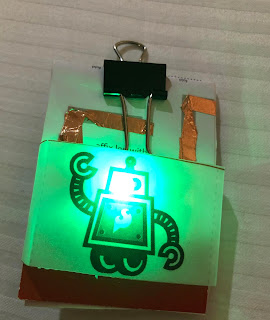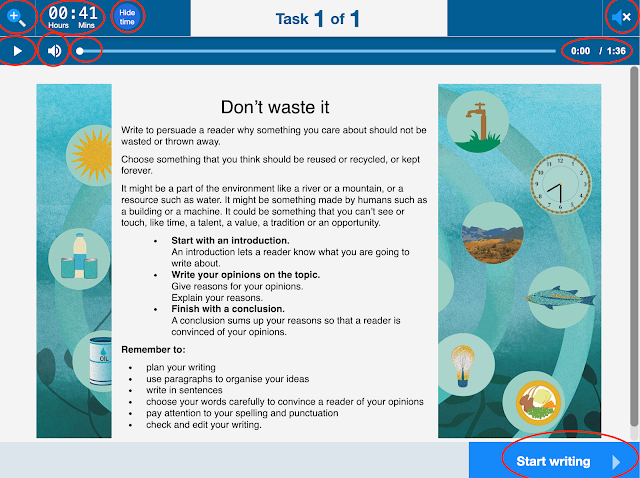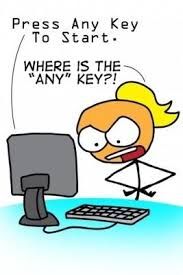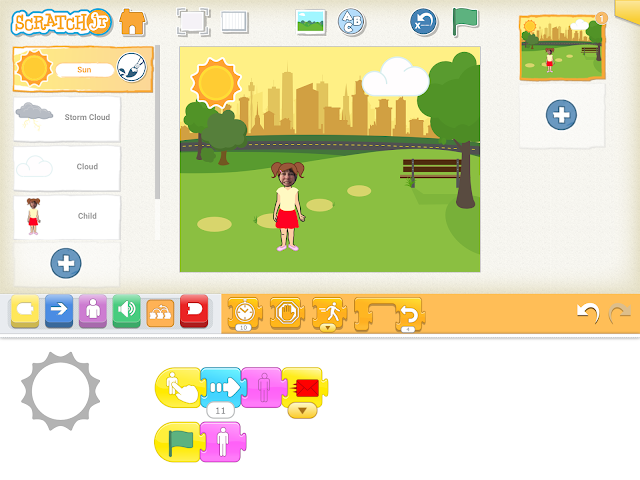Hopper DownUnder and thoughts on Girls and Technology
 The first #HopperDownUnder conference saw 700 women in technology descend on Brisbane Convention and Entertainment Centre July 29-31. This event was an amazing experience and highly recommended for your professional learning plans each year.
The first #HopperDownUnder conference saw 700 women in technology descend on Brisbane Convention and Entertainment Centre July 29-31. This event was an amazing experience and highly recommended for your professional learning plans each year.The workshop I facilitated was on the topic of "Engaging Girls in Technology" it included a presentation, a brainstorming session on Barriers, Solutions and Project ideas and a hands on activity on "Using paper circuits to prototype for etextiles".
The purpose of the workshop was to explore with a group of people what are the Barriers to Girls participating in Technology, Possible Solutions to this problem and suggested projects that could be implemented in schools. The discussion was facilitated using a Padlet, which is an online brainstorming tool.
The second part of the workshop was facilitated by Helen Kardiasmenos she presented some ideas on integrating technology with primary girls links to literacy and an example of paper circuits for Doll:e 1.0 by Shanda McCloskey.
My Takeaways
Discussion Questions
During the workshop 3 questions were posed. Each member of the workshop was offered the opportunity to contribute to the discusson via a Padlet.
- Barriers - Why are girls not choosing STEM subjects?
- Solutions - How do you propose we get more girls selecting STEM subjects?
- Project Ideas - include weblinks if you can.
Summary of Discussion
There were many themes to the barriers that participant considered reasons girls are not selecting STEM subjects. Remembering this was not based on research but perceived barriers. The main themes were
- Stereotypes
- Girls and Parents perceptions of who should do and does do STEM subjects.
- Perceptions about difficulty of STEM subjects
- Lack of role models
The themes for solutions to this problem included
- Improve teacher knowledge
- Improve school subject offering
- Start STEM subjects and experiences young
- Role Models
- Career information
Project ideas centred predominantly on
- resources and services offered by a range of university and industry groups
- eTextiles
- Competitions
- Resources for teachers to upskill themselves and use for student activities
Activities in the Workshop
The second part of this workshop was related to using paper circuits to prototype for simple etextiles projects.
Information on the Paper Circuits activity can be found here. This type of activity teachers the concepts of circuits and priority of having separate positive and negative parts to the circuit.
My Takeaways
- The lack of participation by girls in STEM is a complex problem linked to attitudes by parents, teachers, schools, girls and the community.
- There is not one solution to solve this problem.
- There could be boys also not taking subjects due to technology stereotypes.
- There are many industry and tertiary programs designed to help schools, teachers and students designed for engagement for both girls and boys.
- Several years ago there were programs in place to improve the performance of boys in reading and English. We should not be afraid to have programs to improve the participating of girls in Technology or STEM subjects in general.
Barriers - Why are girls not choosing STEM subjects?
- Intimidation by boys in the classes.
- Parents discouraging girls from pursuing “hard” sciences because they think it’s for boys
- STEM subjects are perceived as "boy" subjects and are considered nerdy, which can be a stereotype that many girls may not want to associate with
- family and cultural influences
- Always being told they’re not good enough
- Limited exposure to STEM areas
- STEM is perceived as boring and geeky.
- They have a fear to take the STEM subjects
- Many schools don’t have a range of subjects offered
- Didn't get encouragement to study physics/ chemistry at school
- Growing up with the impression that STEM belong to the men industry
- Lack of subject choice/clashes with other classes/lack of prioritisation of STEM by the school (Eng Student/Also volunteer in schools)
- Our families influence our choices. Male and female gender bias roles are often assigned to us early on.
- Teachers encouraging female students to do subjects that are easier. Because their future partner (make) is meant to make more money - High school student
- Parent jobs, they hear about and see what their parents do and what their friends mums do. The biggest group of employed women they see are teachers.
- Their friends are not choosing these subjects. It’s just not in the conversation.
- Don’t see themselves in those roles..stereotypes
- Boys can be overpowering in class - 21 boys / 3 girls in my last S.Team class
- Schools are still getting their heads around the subject and promoting it (Educator)
- Peer influences
- Why wouldn’t people want to choose technology when it’s the future? It’s a high demand career for an ever revolving industry (HS Student)
- Sometimes girls find STEM subjects difficult at first, or don't get perfect grades and immediately give up because they think they're not good enough to do it.
- Because other girls aren’t - they want to be with friends
- Not confident, and scared of being laughed at (both for doing in STEM and not doing well in STEM).
- Lack of exposure
- Bad teachers
- If friends aren’t going into those classes, they don’t want to be the only girl in the class so they don’t even bother to join the classes.
- People have said that STEM subjects are hard. (HS Student)
- A lot of girls look at what the society around them is going to think if they are seen in classes like IT and Technology because “that’s where the nerdy kids go” (high school student)
- Fear of failure - risk taking is not encouraged in our girls
- Teachers are actively discouraging them from selecting STEM subjects unless they are high flyers
- Lack of teacher confidence in STEM at the primary level, also lack of expertise at the high school level (especially in the public system) (Eng Student)
- Implicit and tacit reasons contribute most than explicit reasons.
- Awareness of the possibilities for girls. Tradition is sometimes the hardest thing to break! (Educator)
- No women role models to encourage them to choose STEM
- feeling like you don't belong in a class full of boys, and if you are not doing well (i.e. getting As) it is difficult to keep going
- The stereotype of a STEM professional is anti-social and geeky and girls don't want to be associated with that
- Girls feel like they don't belong - it's uncomfortable to be in the minority in the class where often they comprise only 10-20% of the class room
- Their teachers are mainly women, especially in primary school, and they a) are not confident in computer science themselves and b) don’t have time to learn. It is often more difficult to go to Pd and leave work - you have to write out the work as well. Holiday boot camps would be ideal.
- Old fashioned stereotypes about gender roles
- Parents not supportive - thinks girls should do subjects that are more "girly"
- Girls want to be successful - they feel anxious if they are successful.
- Biases from parents being transferred to kids
- Lack of exposure to carrier options.
- Being told that 'if you like maths/science you should be an engineer'
- Demystify STEM - it's not that hard, everyone is capable
Solutions - How do you propose we get more girls selecting STEM subjects?
- Showing girls the potential careers related to CS or how CS can compliment their career choices (e.g., interior design and web design skills) (University Researcher)
- Exposing them to more career options and female role models from a variety of backgrounds
- Starting STEM education very early so that girls are confident in their skills from an early age
- Provide more role models as to what women do in STEM fields
- Hands on experience for girls at young age
- Focus on solution creation, creativity, 'saving the world'
- Create STEM classrooms to be inviting physical spaces - add posters, highlight women in STEM, creative endeavours, field work, inventions by women
- More positive STEM experiences
- Expose them to tech in ways that can build confidence
- Talking about it more. Bringing technology into girls consideration set at a younger age.
- Connect with successful women in STEM technologies
- Seeing real women in the workforce pursuing STEM fields as well as seeing media representation of women in STEM fields would be helpful. It is also important to show that women in STEM don't have to be "nerdy"; showing young girls that you can be a girly girl and still be in the STEM field is important.
- Give better career advice earlier.
- Role models(visits by uni students and people in tech)/positive media portrayals/teachers passionate about STEM (Eng Student)
- Introduce practical maths and science early
- Parents need to understand that opportunities shouldn't be gender-bound
- Conducting workshops to encourage girls in participating STEM related activities
- Encourage and promote from a very young age
- Encourage risk taking. Boys are encouraged to take risks in all aspects of society
- Communication tech, such as Instagram are popular. Engage girls by a focus on applications of tech first, followed by underlying tech. (parent)
- Showing them the opportunities and giving them female role models to aspire towards.
- Showing them that it's okay to fail at something and that you can still succeed at it if it interests you.
- Have positive role models such as teachers that we look up to telling us how it could impact our life for the better
- Teach in a way that is relevant to the girls age group, interests.
- Early promotion in primary school. Stem days / House competition like sports days.
- Showing them different applications of STEM in a variety of fields.
- Providing early exposure to what it's like working in STEM
- Teach parents that STEM is for everyone
- Teaching teachers to support students going into STEM
- Show them that STEM subjects are awesome, also needs creativity and builds confidence.
- Ultimately a holistic solution is required. One in which a long term societal commitment is required
- Support women in STEM fields who aren't straight A students as well!
- Positive female role models; early experiences that connect STEM to socially relevant problem solving
- Show them what careers they could have if they choose STEM subjects EARLY
- Through Makerspaces, TechMate, STEMies Club, Coding & Robotics Club... integrating tech across curriculum (Educator)
- Engaging them in primary can whet their natural curiosity (Educator)
- Provide mentoring opportunities by connecting younger students with women already studying STEM at university
- Make sure it's STEAM (science, tech, engineer, ART, maths) not just STEM
- Make STEM more creative - focus on content that can help girls unleash their creative potential rather than "boring"
- Make it relatable to their interest
- Peer support, mentorship and networks to help support them throughout their journey
- Active recruitment in which teachers specifically encourage individual young women to enroll in STEM courses
- Curriculum that allows for creativity, collaboration, open-ended solutions, and student autonomy in selecting applications of STEM that are meaningful to young women.
- When marketing STEM classes or careers, don't start with "you have to be good at math to go into STEM." Even when girls are better at math than the boys, they don't think they are good enough. Use STEM/CS as onramp to math efficacy, not a gatekeeper.
- Curriculum that allows for creativity, collaboration, open-ended solutions, and student autonomy in selecting applications of STEM that are meaningful to young women.
- Focus on a growth mindset in STEM and math in particular
Project Ideas - include weblinks if you can.
- Join like minded people and listen to the experience https://girlshapedflames.com/
- NCWIT has some amazing resources including https://www.ncwit.org/
- Resources Robotics workshops at schools aiming to empower more girls to pursue engineering (please get in touch if you have suggestions for more resources to add to the Robogals page above) robogalsbrisbane.org/
- RoboCup Junior robocupjunior.org.au
- Makerspaces Australia http://makerspacesaustralia.weebly.com/what-is-a-makerspace.html
- Technolochicas - Resources for Latina Women https://technolochicas.org/
- QMEA - they are taking on a digital tech teacher this year who will organise day long activities that you can bring to your school https://qmea.org.au/
- STEM schools outreach program with a focus on hands on challenges - offered free of charge by uni students (usually uni students https://www.ewb.org.au/whatwedo/education-research/school-outreach
- CSUnplugged http://csunplugged.org
- Science champion instagram story books and movies
- Girls Who Code https://girlswhocode.com/
- Learn IT Girl https://www.learnitgirl.com/
- Girl Geek Academy https://girlgeekacademy.com/
- Women in Science by Rachel Ignotofsky https://www.rachelignotofskydesign.com/women-in-science
- Girls' Programming Network (GPN) https://sites.google.com/site/girlsprogrammingnetwork/
- Codingtrain on YouTube is a great resource and example of fun, easy step by step programming in JavaScript https://www.youtube.com/user/shiffman/videos
- Technovation Challenge - tech entrepreneurship competition for girls in primary & high school https://technovationchallenge.org/
- Stitching the Loop (e-textiles for teaching HS CS) http://www.exploringcs.org/e-textiles
- Creative Technology hackathons - build things things girls would be interested in e.g. LED fashion, animation, graphic design
- Code like a girl... https://codelikeagirl.org/
- Tinkering Child Blog http://tinkeringchild.com/
- ShadowTech NZ - program that helps girls experience what it's like to work in tech for a day, help them understand that there are many opportunities in tech sector https://shadowtech.nz/
- Code.org Girls Links https://code.org/girls
- QUT STEM for Schools https://www.qut.edu.au/study/career-advisers-and-teachers/stem-for-schools
- Microsoft DigiGirlz https://www.microsoft.com/en-us/diversity/programs/digigirlz/default.aspx
- IBMs CyberDay for Girls https://www.ibm.com/security/news/cyberday-for-girls
- The university of Adelaide, CSER program https://csermoocs.adelaide.edu.au/
- Australian Computing Academy https://aca.edu.au/
- Bebras Challenge https://www.bebras.edu.au/










Comments
Post a Comment